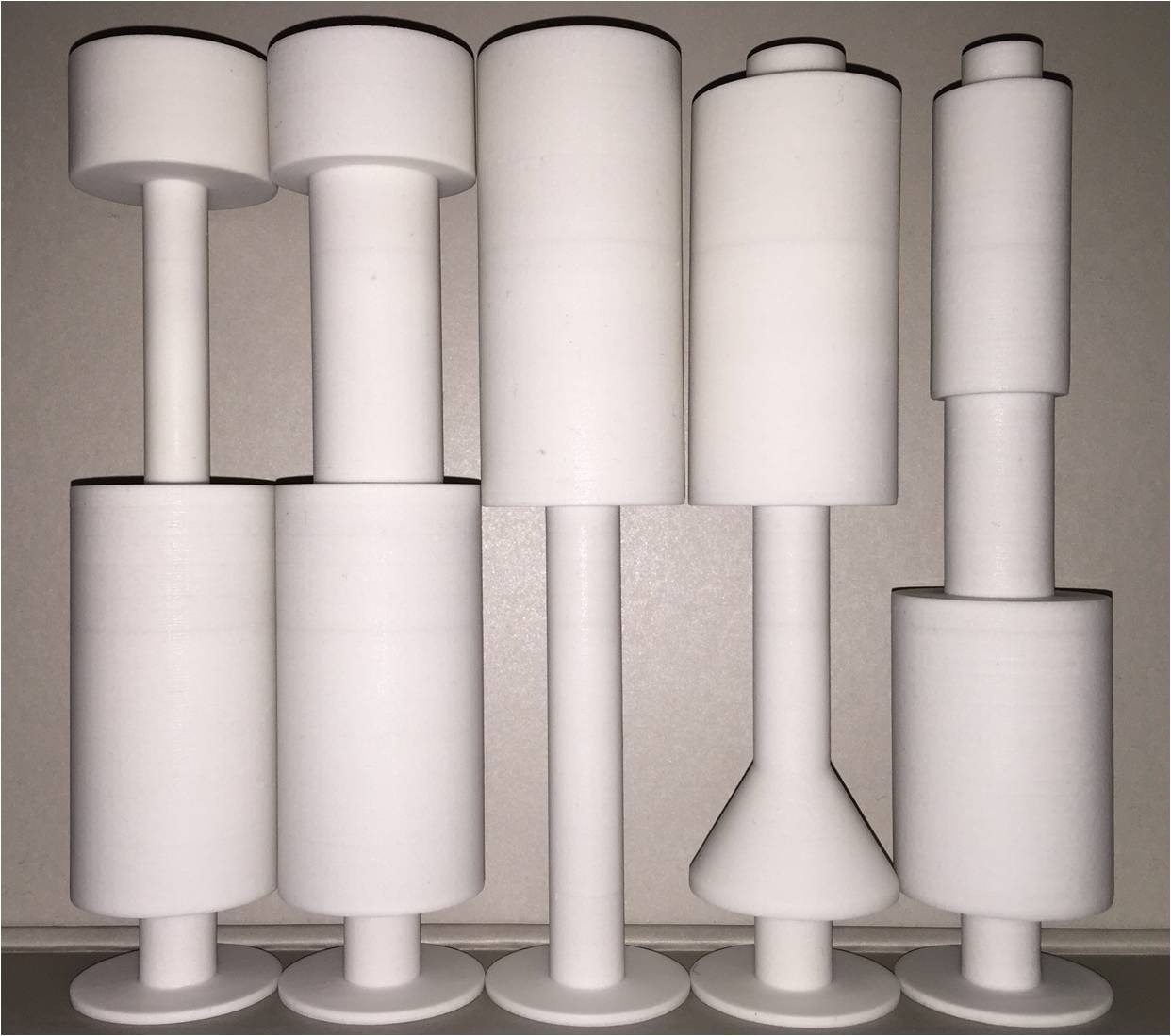1. Introduction
The Vowel by Chiba and Kajiyama (1941-42) integrated the mechanisms of vowel production and perception from the viewpoints of physiology, physics and psychology in a single book. In a section of this book, the authors conducted an experiment where they made physical models of the human vocal tract based on their measurements and produced vowels from those models. As a result, they confirmed that the artificially produced vowels from the models had similar characteristics as those produced by human being had. Arai (2001) replicated the physical models in The Vowel at the 60th anniversary of its publication. In 2009, the replicas (Model VTM-C10) were reborn as VTM-N20; and furthermore, we have released the VTM-T20 family, of which the configurations are much simpler and the sound quality are better. The VTM family, including VTM-N20 and VTM-T20 have already started to being used by many people and help them to intuitively understand the mechanisms of vowel production (Arai, 2007, 2012, 2016).
The Phonetic Society of Japan celebrated its 90th anniversary in 2016, and we focused again spotlight on the achievements by Chiba and Kajiyama (Arai, 2017). Then, in 2017, files of VTM-N20 and VTM-T20 for 3D printing became available through this website.
Click [G200] for more details on the vocal-tract configurations using VTM-C10.
Click here for a YouTube video on demonstrations using VTM-N20.
Click here for a YouTube video on demonstrations using VTM-T20.
2. Files for 3D printing
2.1 VTM-N20
The following zip file contains files of VTM-N20 for 3D printing.
Arai_VTM-N20.zip
Please read “readme.txt” first in this zip fie in advance.
Examples of 3D printing (from left, /i/, /e/, /a/, /o/, /u/)

★ If you are seeking a place for 3D printing, please contact arai@sophia.ac.jp.
2.2 VTM-T20
The following zip file contains files of VTM-T20 for 3D printing.
Arai_VTM-T20.zip
Please read “readme.txt” first in this zip fie in advance.
Examples of 3D printing (from left, /i/, /e/, /a/, /o/, /u/)

★ If you are seeking a place for 3D printing, please contact arai@sophia.ac.jp.
3. Sound source
You need a sound source to produce vowels with the vocal-tract models.
Please note that a sound source with low quality can only produce less intelligible sounds.
★ If you are seeking a better sound source, please contact arai@sophia.ac.jp.
4. Museums
The members of the VTM family have already been installed and/or exhibited at several (science) museums.
- Shizuoka Science Museum, permanent exhibition, VTM-C10 and VTM-P10
- Hitachi Civic Center Science Museum, permanent exhibition, VTM-C10
- Okinawa Zoo & Museum, permanent exhibition, VTM-T50
- Sony ExploraScience, temporary exhibition, VTM-C10
- Science Center for Children “Hachilabo”, temporary exhibition, VTM-T38, VTM-HS
- Technorama (Switzerland), temporary exhibition, VTM-T20, VTM-S20, VTM-HS
- Händel-Haus (Germany), permanent exhibition, VTM-T38
- Estonian National Museum (Estonia), permanent exhibition, Estonian 9 vowels, VTM-S20
★ If you are considering a new exhibition at a museum, please contact arai@sophia.ac.jp.
5. Acknowledgment
This work is partially supported by JSPS KAKENHI Grant Number 15K00930.
- Arai, T., The replication of Chiba and Kajiyama’s mechanical models of the human vocal cavity, J. Phonetic Soc. Jpn., 5(2), 31-38, 2001.
- Arai, T., “Education system in acoustics of speech production using physical models of the human vocal tract,” Acoust. Sci. Tech., 28(3), 190-201, 2007.
- Arai, T., “Education in acoustics and speech science using vocal-tract models,” J. Acoust. Soc. Am., 131(3), Pt. 2, 2444-2454, 2012.
- Arai, T., “Vocal-tract models and their applications in education for intuitive understanding of speech production,” Acoust. Sci. & Tech., 37(4), 148-156, 2016.
- Arai, T., “What Tsutomu Chiba left behind,” J. Phonetic Soc. Jpn., 20(3), 2017.
- Chiba, T. and Kajiyama, M. (1941-42) The vowel: Its Nature and Structure, Tokyo: Tokyo-Kaiseikan.